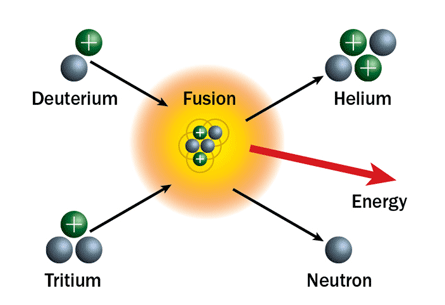I have been posting lately about nuclear fusion reactors. I have not covered them before in my blog because I did not feel that there were any fusion projects that could possibly be turned into commercial energy sources for decades. There is an old joke that nuclear fusion is forty years away, always. Nuclear fusion just seemed to absorb billions of dollars but like the end of the rainbow it just kept receding as you approached it.
I am happy to say that there now appears to be three different approaches to nuclear fusion power that might result in a commercial model in less than ten years. All three of these new fusion reactor projects are being done by private groups. For reference, I have also blogged about the huge ITER project that is being build in France by a consortium of governments. This experimental fusion reactor will cost billions of dollars and will not even be completed until 2027 at the soonest. Then there will have to be years of testing before any possible commercial reactor could be built. The three private fusion reactors under development will be about ten times as small, ten times as simple, ten times as cheap and generate more power than the ITER design. And, more importantly, one or more may hit the market before ITER is ever finished.
The fuel for these fusions reactors will be very light elements like hydrogen, deuterium, tritium and boron. Hydrogen is easily made by decomposing water into oxygen and hydrogen. Deuterium can be separated from normal water or from hydrogen produced by electrolysis. Tritium can be produced when deuterium captures a neutron from nuclear fission. Tritium can also be produced in nuclear fission reactors by neutron bombardment of lithium-6, a stable isotope.
Lithium is a very useful common element in the crust of the Earth and there are many sources. World production is about one one hundredth of the economically extractable reserves. So there is easily a hundred years supply at current levels of production. Lithium-6 is about eight percent of naturally occurring lithium.
Boron is a fairly rare element but is concentrated in water soluble minerals. About eighty percent of boron is in the form of the stable isotope borton-11. Proven boron reserves are about two hundred and fifty times current production levels so we have several centuries of boron available at current levels of use. However, it is time consuming and expensive to separate out the boron-11.
Deuterium and tritium reactions produce fast neutrons which causes concrete and metal to become brittle and can make other materials radioactive. While boron-11 may be expensive to produce, the amount consumed in a nuclear fusion reactor is very small compared to the consumption of boron for other industrial application. The main benefit of a hydrogen-boron reactor is that it does not produce fast neutrons. If a commercial nuclear fusion reactor is created, I would prefer that it not produce neutrons.
The basic waste product of these nuclear fusion reactors is alpha particles or helium nuclei. As a matter of fact, the U.S. has been selling off critical helium reserves lately and we need to produce more helium. I do not have the numbers to show that substantial quantities of helium would be produced by fusion reactors but it is nice to have a harmless waste product that could have commercial value instead of the horrible waste generated by a nuclear fission reactor that has to be buried for centuries.
The development of a commercially competitive nuclear fusion power reactor would be a game changer for the global energy industry. It could solve the base-load problem of renewables such as wind and solar much better than nuclear fission reactors and fossil fuels.
